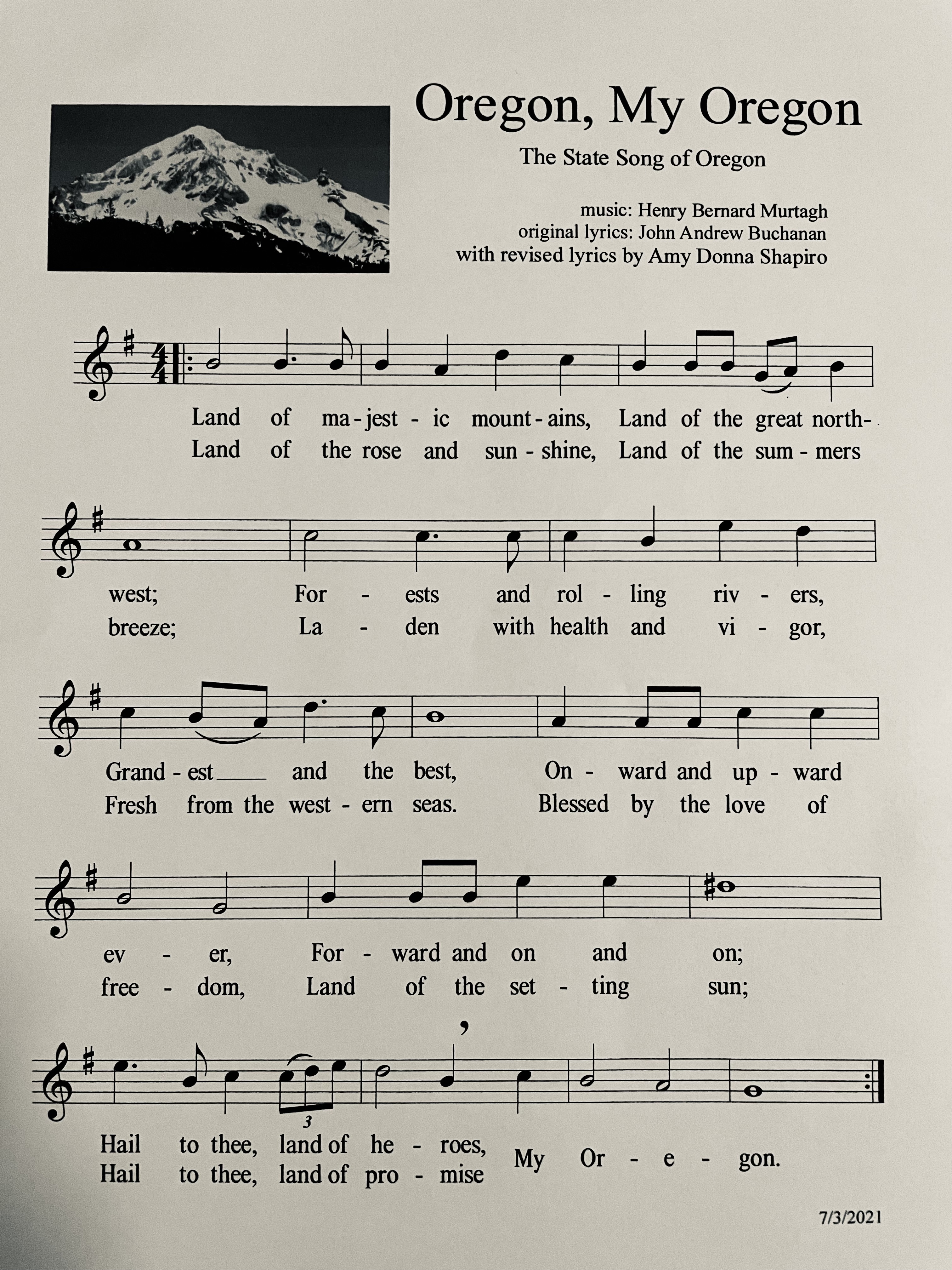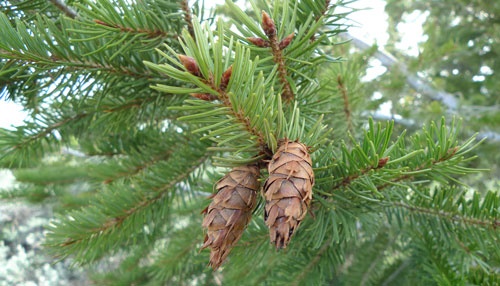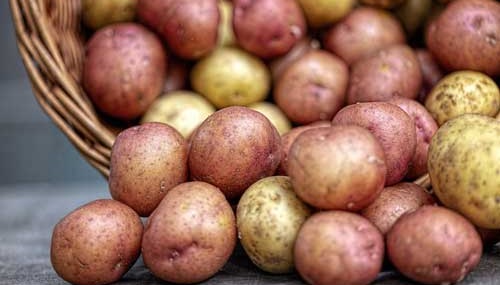Soil, State
The Legislature designated Jory soil as Oregon’s state soil in 2011. Jory soil is distinguished by its brick-red, clayish nature, developed on old volcanic rocks through thousands of years of weathering. It is estimated to exist on more than 300,000 acres of western Oregon hillsides and is named after Jory Hill in Marion County.
Jory soil supports forest vegetation such as Douglas fir and Oregon white oak. Many areas with the soil have been cleared and are now used for agriculture. Jory soil, coupled with Willamette Valley climate, provides an ideal setting for various crops, including wine grapes, wheat, Christmas trees, berries, hazelnuts and grass seed.
Song, State
 Oregon designated "Oregon, My Oregon" as the official state song in 1927.View sheet music
Oregon designated "Oregon, My Oregon" as the official state song in 1927.View sheet music J. A. Buchanan of Astoria and Henry B. Murtagh of Portland wrote “Oregon, My Oregon,” in 1920. With this song, Buchanan and Murtagh won a statewide competition sponsored by the Society of Oregon Composers.The song became the Oregon state song in 1927. In 2021, the Oregon Legislature approved new lyrics to the song written by Amy Shapiro of Beaverton. The updated lyrics are meant to be more inclusive and removed racist language.
Standard of Time
The standard time zones were established by Congress in 1918. Oregon lies within the Pacific Standard Time zone with the exception of most of Malheur County along the Idaho border, which is on Mountain Standard Time. Daylight Saving Time is in effect from March to November.
Clocks “spring forward” one hour at 2:00 a.m. on the second Sunday of March: 3/9/25, 3/8/26, 3/14/27
Clocks “fall back” one hour at 2:00 a.m. on the first Sunday of November: 11/2/25, 11/1/26, 11/7/27
Steak, State
The 2025 Oregon Legislature designated the T-bone steak as the state steak. The T-bone is a cut of beef taken from the short loin of beef cattle and features both the strip and tenderloin steaks. The Oregon Cattlewomen recommended the designation and chose the T-bone steak because the bone in the middle is representative of the Cascade Mountains that similarly split Oregon.
Tartan, State
Tartan, registration number 36406 was designated Oregon’s official tartan by the 2017 Legislature. With colors symbolizing the distinctive features of the state, its blue, gold, green, black, white, taupe, crimson and azure represent the water, mountains, forests, grasslands and volcanic past of our state.
Temperatures, Records and Averages
Highest: 119°F on August 10, 1898, in Pendleton and on July 29, 1898, in Prineville
Lowest: -54°F on February 9, 1933, in Ukiah (50 miles south of Pendleton) and on February 10, 1933, in Seneca (105 miles southwest of Baker City)
Average January/July Temperatures
Burns .................January 26.5°F/July 68.6°F
Grants Pass......January 41.5°F/July 73.4°F
North Bend......January 47.3°F/July 59.8°F
Redmond..........January 34.8°F/July 73.4°F
Salem.................January 42.1°F/July 69.3°F
 The Douglas-fir is Oregon's state tree and has played a key role in the economy of western Oregon. (Oregon State Archives Photo)
The Douglas-fir is Oregon's state tree and has played a key role in the economy of western Oregon. (Oregon State Archives Photo)
Travel and Tourism (2023)
Total direct spending: $14 billion
Overnight visitors: Party trips 12 million, Person trips 29.9 million
Travel-generated employment: 118,500
Tree, State
The Douglas fir (Pseudotsuga menziesii), named for David Douglas, a 19th century Scottish botanist, was designated the Oregon state tree in 1939. Great strength, stiffness and moderate weight make it an invaluable timber product said to be stronger than concrete. Averaging up to 200' in height and six feet in diameter, heights of 325' and diameters of 15' can also be found.
 Potatoes are a tuber of the plant Solanum tuberosum and are a root vegetable native to the Americas. Wild potatoes are found in the southern United States, and it’s believed they were domesticated in what is now Peru and northern Bolivia. Oregon is one of the top producers of potatoes in the United States.
Potatoes are a tuber of the plant Solanum tuberosum and are a root vegetable native to the Americas. Wild potatoes are found in the southern United States, and it’s believed they were domesticated in what is now Peru and northern Bolivia. Oregon is one of the top producers of potatoes in the United States.
Vegetable, State
Potatoes of all varieties were named Oregon's state vegetable in 2023.
Waterfall, Highest
Multnomah Falls: 620'
Wine Industry Production (2022)
Grape production value: $330 million.
Number of vineyards: 1,470
Number of wineries: 1,110
Total planted acreage: 44,487 acres
Leading variety: Pinot Noir—60% of all planted acreage and 57% of wine grape production